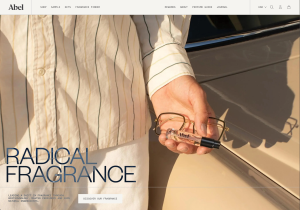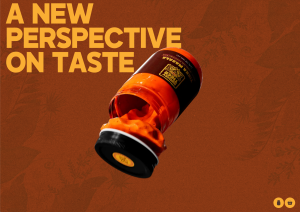Modern technology has led us to believe in the democratization of creativity—the idea that anyone can be a creator. But in practice, this creative freedom is frequently filtered through platforms driven by algorithms and engagement metrics, where popularity often stands in for value. As a result, these systems tend to reward repetition over resonance, favoring what performs over originality or depth.
Building on this, at the center of the shift is a flawed assumption that engagement equals relevance, and that creation alone implies value. The rise of generative AI is set to supercharge this belief. With just a few prompts and a few seconds, we get outputs that resemble premium design, formal poetry, or cinematic photography. While some celebrate these tools for empowering imagination, others warn of an erosion in quality, distinction, and cultural expectation.
But maybe our focus is too fixed on one side. The anxiety around generative AI isn’t only about artists or writers being replaced—it’s also about the audiences that have vanished. Great art, the kind that evokes and unsettles, requires more than just a creator. It feeds on a discerning, emotionally literate audience. Ones that don’t just consume, but thoughtfully engage. And in a culture where aesthetic polish routinely outshines emotional depth, and convenience often outranks craft, the kind of audience that demands more than surface-level beauty or algorithm-approved vibes is becoming increasingly rare.
The Art Dies With the Audience
A glimpse of what we’ve lost can be found in Martin Scorsese’s Public Speaking, where Fran Lebowitz offers a cutting reflection on New York’s cultural landscape post-AIDS. She recalls how, in the 1970s and early ’80s, the most attentive ballet audiences weren’t tourists or patrons of prestige. They were gay men. These men didn’t just attend performances, they studied them. They obsessed over technique, could identify subtle shifts in a dancer’s movement, and understood when a choreographer was saying something urgent through form.
And then AIDS devastated that audience. As Fran put it, the ballet didn’t die because the dancers died. It died because the audience did. You can’t talk about art without talking about the audience. Audiences elevate the work—they challenge it, contextualize it, and demand more from it. It’s this kind of audience that shapes taste.
This is what’s missing from the generative AI conversation. The concern isn’t just that machines can now generate brand design, compose music, produce movies, or write novels, it’s that fewer and fewer people seem equipped to tell whether any of it is actually good.
The rigorous audiences of the past who could identify and appreciate craft, who tracked evolution, who understood context, are becoming rarer. In their place is a feed-based consumption model that makes no distinction between effort and output. And without audiences that can, or will, tell the difference, even brilliant work risks becoming indistinguishable from noise.
The ‘Good Enough’ Standard
AI-generated content is seeping into everything. We now have virtual athletes, deepfake YouTube shows, and even synthetic consumer audiences used for brand research and product testing.
Much of it is passable and increasingly deemed acceptable, especially if it drives efficiency and dollars. Digitally fluent creators and critics have started using the term ‘AI slop’ to better describe the flood of generated work that mimics the shape of creativity but lacks anything that makes art or design feel. And they are right, because so much of this art lacks creative texture and contextual friction. It simply scratches the itch to consume without asking anything of the viewer.
But slop isn’t new, it’s simply that the use of AI is accelerating it. No different from what smartphone cameras did to photography, what Kindle publishing did to books, or what Canva did to design.
The Creator Economy, long praised for breaking down barriers, also diluted standards. Volume eclipsed refinement while output beat craft. Audiences have slowly been conditioned to reward content, not creativity, and over time, that lowered the bar.
Generative AI isn’t entering an environment full of high expectations. It’s stepping into one where expectations have already been worn down by repetition, overstimulation, and the illusion that more is always better.
The Branded Aesthetic
And in the middle of this lowering of the bar, something strange has happened: the language of high art has become the backdrop for everyday marketing. Surrealism. Brutalist typography. Carefully overexposed photography. Strategy decks now come with mood boards. Products are shot like installations. In a way, art stopped being experienced and became aestheticized.
The once-radical language of conceptual art is now the aesthetic baseline for deodorant ads. By co-opting this language, brands inadvertently neutralized the power of the very thing they were trying to borrow. Audiences were trained to expect high visual literacy, but without the emotional depth. To admire design, but not feel anything. The line between campaign shoot and gallery wall thinned. Not necessarily because advertising became more artistic, but because art became more branded.
So when the language of art is reduced to a style guide, or optimized for instant recognition, AI doesn’t have to try very hard to create something passable. It’s trained on a visual culture that’s already been flattened for consumption.





Nothing Is Asked, Nothing Is Given
Art still looks like art. It still uses the right fonts, the right tones, the right references. But so does generative AI, which is why it’s becoming easier to accept. Because, as the audience, we have been shaped by years of quick-swipe aesthetic repetition, and no longer expect to be challenged. We have become trained to consume art like a product through endless scrolling and algorithms.
Everything is starting to speak the same visual language, like a uniform. Not even Austin is weird anymore. And this, too, makes AI inevitable. Because the culture no longer insists on emotional labor or narrative depth. And if the audience doesn’t demand it, the machines won’t provide it.
What We’re Willing to Care About
AI is just as much of a reflection of us, the audience, as it is a threat to creators. It reveals our preferences for convenience, our hunger for stimulation, and our dwindling capacity for patience. It shows us how willing we are to trade emotional complexity for algorithmic efficiency. How quick we are to reward mimicry over mastery.
The danger is not that AI will be the artist, it is that the audience will stop caring whether what they’re seeing is art at all.
Great art needs great audiences. The kind that are invested, discerning, and are not so easy to please. Audiences who value the process, demand substance and know that taste alone isn’t enough. Without them, we get what we settle for.
Because the future of art doesn’t depend on the technology used—it depends on the audience who still knows how to look.
